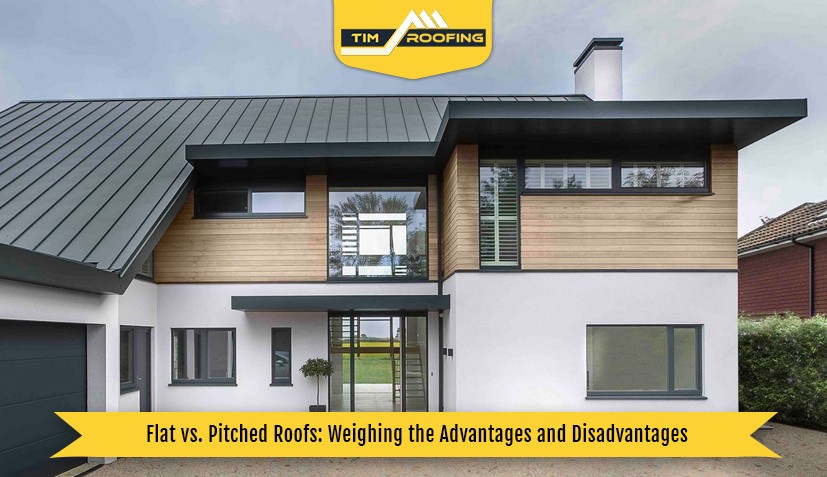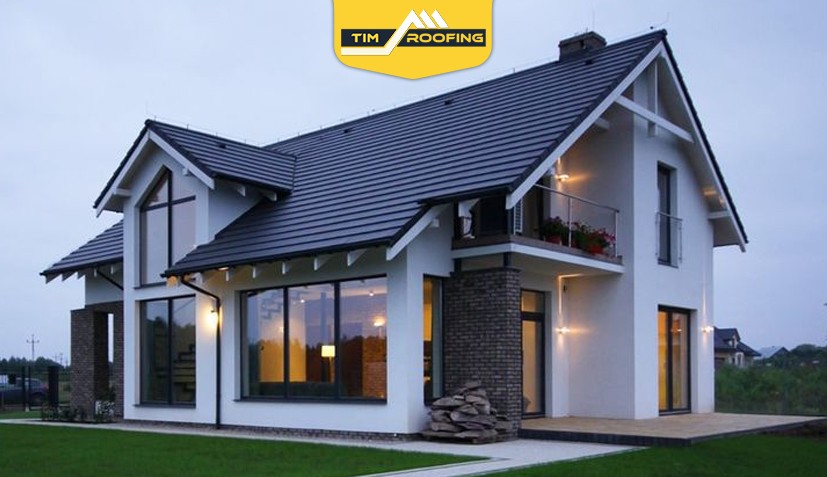Flat vs. Pitched Roof: Weighing the Advantages and Disadvantages
The roof is the most important part of any house which provides us protection. Nowadays, while building a house, people think a lot about the design of the roof. Many people are in dilemma about the roof of their house whether to get a pitched roof or a flat roof. Both types of roofs have their own advantages and disadvantages which are important to know about. It is very important to keep many things in mind while choosing a roof. Weather conditions, house design and local environment are all important factors. Today we will know in detail what is the difference between a pitched roof and a flat roof. Along with this, we will also understand which roof can prove to be better in which situation.
Advantages of Pitched Roof
- The pitched roof drains the rainwater easily. Water never accumulates on this type of roof. The slope of the pitched roof also makes the snow fall down naturally. This roof also provides additional insulation to the house which helps in temperature control.
- Additional space is also available under the pitched roof. This space can be used for storage. Many people also convert this space into an additional room. The pitched roof also provides a traditional and beautiful look to the house. This roof lasts a long time and is also easy to repair.
- The slope of the pitched roof also improves air flow. This keeps the temperature inside the house under control and saves energy. In summer, this roof reflects the direct rays of the sun. This keeps the upper part of the house cool and reduces electricity consumption.
- The external beauty of the house also increases due to the pitched roof. This type of roof can be made with different types of roofing materials. The roof is made attractive by using tiles, shingles or metal. This roof also increases the value of the house and affects the selling price.
- The space under the roof can be developed as an attic space. This space is useful for children’s play or guest room. Natural light and air is managed by installing windows in the attic. This space can also be converted into a home theater or home office.
Disadvantages of Pitched Roof
- Pitched roof requires more material to build. It also takes more time to build this roof. Pitched roof can be damaged during strong winds. The higher the slope of the roof, the greater the effect of the wind.
- Minor repair work is also difficult in a pitched roof. Climbing and working on a sloping roof is a bit dangerous. Installing solar panels on a pitched roof can also be challenging. Sometimes the slope of the roof is not in the right direction for the solar panel.
Flat Roof Advantages
- The extra space on a flat roof can be used in many ways. Gardens can be built on this roof which is very popular. It is very easy to install solar panels on a flat roof. This roof also provides an ideal place for an air conditioning unit.
- Flat roofs require less material to build. This roof is also easy to maintain and repair. Flat roofs look modern and look good with many architectural styles. This roof also withstands strong winds better.
- Parties or social gatherings can be organized on a flat roof. This space is developed as an outdoor entertainment area. Seating arrangements and a small kitchen can also be made here. This place is comfortable for the family in the evening.
- Fitness area or yoga space can also be made on a flat roof. The experience of exercising in the open air is very good. Gym equipment can be kept here and exercise can be done in the fresh morning air. It is very beneficial for health.
Disadvantages of Flat Roof
- There may be a problem of water accumulation on a flat roof. The roof can be damaged due to improper drainage of rainwater. In snowy areas, snow can accumulate on a flat roof. This puts extra weight on the roof which can be dangerous.
- Waterproofing has to be checked regularly in a flat roof. Regular maintenance is necessary to avoid the problem of water leakage. The lifespan of a flat roof is less than that of a pitched roof. In hot areas, the sun has a greater effect on a flat roof.
- The equipment installed on a flat roof has to be checked regularly. There is trouble in servicing air conditioning units and solar panels. Accumulation of water on the roof can damage these devices. Special arrangements have to be made for their protection.
- In hot weather, the temperature on a flat roof rises very high. This also affects the temperature inside the house. An additional layer of insulation has to be laid which is expensive. More energy is required for cooling which increases the electricity bill.

Regional suitability
- Pitched roofs are more suitable in cold and snowy regions. Snow and rain easily flow down which keeps the roof safe. In hot regions, flat roofs with good waterproofing can work. Flat roofs are more popular in urban areas.
- Pitched roofs are used more in hilly areas. This roof is considered most suitable for the climate here. Both types of roofs can work in coastal areas. Here the main focus should be on waterproofing and protection from moisture.
- Both types of roofs have their place in plain areas. Here the roof is chosen according to local building rules and climate. Flat roofs are more common in industrial areas. Flat roofs are considered a practical option in large commercial buildings.
- The choice of roofing is of special importance in desert areas. It is important to keep in mind the extreme weather conditions here. Special designs are adopted to protect against sand storms and strong sunlight. Special coatings are required along with pitched roofs in these areas.
- Waterproofing of the roof is important in areas with humid climate. Here it is important to avoid the problem of fungus and dampness. Both types of roofs require special treatment. Regular maintenance and repairs become more important here.

